#Kangra School of art
Text
Sobha Singh Art Gallery Palampur: A Brush with Heritage and Elegance
In the heart of Palampur, Himachal Pradesh, lies the Sobha Singh Art Gallery, a sanctuary of artistic brilliance dedicated to the renowned Sikh painter Sobha Singh. Situated in Andretta village, just 14 kilometres south of Palampur, this gallery pays homage to the legendary artist and showcases an exquisite collection that echoes the rich cultural heritage of Punjab. Delve into the profound world…

View On WordPress
#Amrita Pritam#Andretta village#Bhagat Singh#guru-nanak#Himachal Pradesh#Hir-Ranjha#Kangra School of art#Kartar Singh Sarabha#Lal Bahadur Shastri#M.S. Randhawa#Mahatma Gandhi#Nirmal Chandra#palampur#Prithviraj Kapoor#Punjabi legendary couples#Sikh community#Sikh painter Sobha Singh#Sobha Singh#Sobha Singh Art Gallery Palampur#Sobha Singh&039;s artistic universe#Sohni-Mahinval
0 notes
Text

The Sobha Singh Art Gallery is a very significant art center and an integral part of Punjab’s history. The majority of the paintings here are influenced by the Kangra School of art and have been executed in western classical oil painting techniques. Sculptures and busts of M.S. Randhawa, Prithviraj Kapoor, and Nirmal Chandra can be found in the art gallery. Sobha Singh has created portraits of many Indian national heroes such as Bhagat Singh, Kartar Singh Sarabha, Mahatma Gandhi, and Lal Bahadur Shastri in addition to that of the Sikh Gurus. The Art Gallery is just an hour of drive from our Resort in Palampur.
3 notes
·
View notes
Text
Tempo Traveller Hire From Delhi To Dharamshala
Udan Travel IND Services Provide 9, 12, 16, 18, 20, 22, 26 Seater Luxury Tempo Traveller hire in Delhi To Dharamshala Himachal Pradesh Tour Package. Tempo Traveller has 1+1, 2+1, 2+2 Seats, Extra Space for luggage with a Carrier, Which is Well Modified With Excellent Interiors Facilities. 1+1 is Maharaja Seater Tempo Traveller, Sofa Bed, Pushback Seats, Ample space, Music system, LED TV, First Aid Box, Icebox, and Charging point.
Luxury Bus Rental, Tempo Traveller, and Car hire in Delhi Noida Gurgaon Faridabad provides AC and Non AC Luxury Tempo Traveller, Deluxe Tempo Traveller, Maharaja Tempo Traveller, 1x1 Tempo Traveller on rent in Delhi To Dharamshala Himachal Pradesh. Pick up & Drop Service From New Delhi Railway Station and Delhi International Airport, Family tour, School College Group Tour, Business trip, Corporate tour, Marriage, Wedding etc. You can book online Tempo Traveller hire from Delhi To Himachal Pradesh and make every trip memorial, Tempo Traveller booking online in Delhi To Dharamshala Starting Rate Per K.m @Rs.25/-
Dharamshala, located in the Indian state of Himachal Pradesh, is a beautiful hill station with a mix of Tibetan and Indian cultures. There are several local attractions and sightseeing spots in and around Dharamshala. Here are some popular places you can visit:
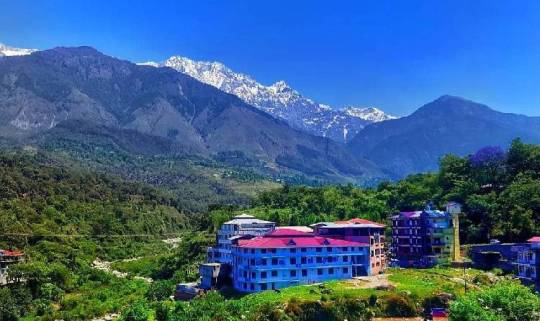
Tsuglagkhang Complex: This complex is the residence of the Dalai Lama and includes the Namgyal Monastery, Tibet Museum, and the Tsuglagkhang Temple. It's a significant religious and cultural centre.
Bhagsunath Temple and Waterfall: Dedicated to Lord Shiva, the Bhagsunath Temple is a popular pilgrimage site. The nearby Bhagsu Waterfall is a serene spot and a good place to relax.
St. John in the Wilderness Church: This Anglican church is located in the wilderness near Dharamshala and is known for its beautiful architecture and serene surroundings.
Dharamkot: It's a small village situated above McLeod Ganj and offers panoramic views of the Dhauladhar range. The village is known for its tranquil atmosphere and is a great place for short hikes.
Dal Lake: Not to be confused with the more famous Dal Lake in Kashmir, this smaller lake near Dharamshala is surrounded by deodar trees and provides a peaceful environment.
Norbulingka Institute: Dedicated to the preservation of Tibetan culture, this institute showcases traditional Tibetan art and craftsmanship.
War Memorial: Located in Dharamshala, this memorial commemorates the war heroes of the Himachal Pradesh region.
Kangra Valley: Explore the picturesque Kangra Valley, known for its lush greenery, tea gardens, and ancient temples. The Kangra Fort is a major historical attraction in this area.
Triund: A popular trekking destination, Triund offers breathtaking views of the Dhauladhar range. The trek is moderate and is suitable for beginners as well.
Kareri Lake: For those interested in trekking, Kareri Lake is another beautiful destination. Surrounded by mountains, it's a peaceful high-altitude lake.
Remember to check the current status and accessibility of these places before planning your visit. Additionally, the weather can vary, so it's a good idea to plan accordingly.
#tempo traveller hire in delhi to dharamshala#delhi to dharamshala tempo traveller booking#delhi to dharamshala tempo traveller#tempo traveller on rent delhi to dharamshala#gurgaon to dharamshala tempo traveller fare#delhi to dharamshala tempo traveller rate per km#tempo traveller hire from noida to dharamshala
0 notes
Text
Unlock the gateway to the best quality education in Palampur at St. Paul's School. Renowned for academic excellence, our institution fosters holistic development, shaping future leaders. With state-of-the-art facilities and a nurturing environment, St. Paul's Palampur is dedicated to cultivating minds for success and innovation.
#best school in himachal pradesh#oldest school in himachal pradesh#boarding school in kangra#best school in kangra himachal pradesh#best school in palampur#best school campus in palampur#famous icse school palampur#top school in himachal pradesh#top school in palampur#best icse schools in himachal pradesh
0 notes
Text
Traditional vs. Contemporary: Choosing Indian Paintings for Your Home
One of the biggest challenges you will face when buying an Indian style painting for your house is the decision to choose between traditional and contemporary. It’s confusing, but it’s a fun challenge, like choosing between two masterpieces. Every style has a certain allure of its own and has the power to change the atmosphere of your home in meaningful ways. There is no wrong answer, but there is definitely one that is more correct than the others, and in this blog, we will help you find your 'more correct’ answer.
The Classic Beauty of Indian Traditional Paintings
Indian traditional paintings have a rich cultural heritage and historical background, as well as centuries-old artistic traditions. They frequently feature historical incidents, mythical themes, and scenes from Indian epics such as the Mahabharata and the Ramayana in their spiritual paintings. The following are some essential elements of traditional Indian paintings:
Rich Heritage: Culture and heritage are heavily emphasised in traditional Indian art. They are frequently linked to renowned art schools, including Kangra, Rajput, and Mughal. These artistic disciplines have been handed down through the ages, and each piece bears witness to the artistic excellence of earlier times.
Detailed Details: These paintings are renowned for their detailed details, which frequently call for an extreme level of expertise and precision. The artists of the past were immensely proud of their ability to depict every little detail, from the complex patterns on garments and jewellery to the facial emotions of figures. For example, this extremely detailed 'Madhubani Painting' by Ranjit Jha is an absolute treat for the eyes.
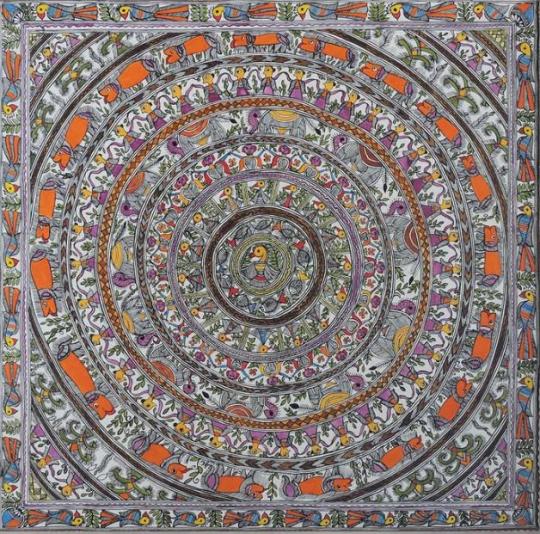
Bright Colours: Vibrant colours are widely used in traditional Indian paintings, and each colour has a significant meaning. For example, the colour red is linked to passion and love, whereas the colour green represents fertility and fresh starts. This vivid colour scheme gives the artwork a sudden rush of vitality and energy that makes it aesthetically striking. Bright colours were usually used in landscape oil paintings to give a realistic touch to natural elements.
Cultural Significance: Traditional paintings are considered cultural treasures as well as pieces of art since they frequently feature subjects from Indian mythology and folklore. They serve as a visual depiction of the values, myths, and ideas that have influenced India's diverse cultural fabric.
Hanging an Indian traditional painting on your wall is like hanging a significant part of our rich culture. They give any living area a hint of classic elegance and sophistication.
Indian Contemporary Paintings
Contemporary Indian paintings, conversely, signify a break from custom. They frequently adopt more contemporary and abstract forms, which represent the changing Indian art landscape. What you need to know about modern Indian paintings is as follows:
Innovation and Experimentation: Indian contemporary artists are renowned for their inventive and creative methods of creating art. They frequently push the limits of what is considered art and are not constrained by conventional topics or techniques.
Variety of genres: From pop art and minimalism to impressionistic and abstract, contemporary Indian paintings cover a broad spectrum of genres. Regardless of your preference, there is something for everyone, thanks to this diversity. For example, Soulmates by K. Prakash will act as a perfect focal point in your living room.
Simplicity and Elegance: Subdued colour schemes, minimalist compositions, and clear lines are characteristics of many modern Indian paintings. They are the ideal option for modern interior decor since they may infuse your house with a feeling of refinement and serenity.
Versatility: Modern house decor can easily complement contemporary Indian paintings. They are a great option if you want to give a modern living area a dash of refinement and craftsmanship. Indian contemporary art can belong in any decor style, be it colourful and lively or sleek and minimalist.
Choosing the right painting style for your house
Take into account the following aspects when deciding between traditional and modern Indian paintings for your home:
Personal Style: Which style best suits your own tastes and inclinations? Which kind of art draws you more—the inventive and daring expressions of contemporary art, or the narratives and cultural significance of older paintings?
Interior Design: Evaluate the furnishings and decor you currently have. Will the artwork conflict with or fit well with your interior design? A classic artwork can work elegantly into the overall decor of an interior with a traditional theme. A modern object can serve as an eye-catching focal point in a minimalist or modern setting. For example, Rickshaw series #1 would work exceptionally well on a white background.
Room Dimensions and Lighting: Take into account the room's dimensions and lighting when choosing the artwork. While smaller spaces could benefit from smaller, more personal paintings, larger rooms can handle bolder, larger paintings.
Budget: Because traditional paintings have such historical and cultural value, they can be pricey, particularly those by well-known artists. A decision should be made with your budget in mind. Although pricing for contemporary art can vary greatly based on the artist's renown and the complexity of the piece, it may provide more affordable possibilities.
Recall that when it comes to art and decor, there are no hard-and-fast laws. For a distinctive and varied atmosphere in your house, you can even combine traditional and modern Indian paintings.
Conclusion
Both traditional Indian paintings that are rich in history and culture and modern pieces that capture the dynamic nature of art have a unique position in the world of home decor. Finding the best wall painting for the living room is a challenging task, but in the end, your decision will be based on your personal taste, the atmosphere you want to create, and the narratives you want your house to tell through its artwork. Indian paintings that speak to your spirit and the space will enhance your house, whether you choose the classic elegance of heritage or the audacious expressions of modern art.
If you are looking to buy paintings for your home, you must check out Satguru’s. They are one of the best decor shops in Mumbai. They sell Indian traditional, modern, spiritual, and landscape oil paintings that are perfect for living rooms and bedrooms. Along with paintings, you can also buy vases, idols, wall paintings, and dinnerware. Visit their website to learn more about their products.
0 notes
Text
Discover Your Inner Creativity with the Best Art Workshops in Dharamshala
Dharamshala, a beautiful hill station in the Indian state of Himachal Pradesh, is not only known for its stunning natural beauty and vibrant Tibetan culture but also for its thriving art scene. Here are some of the best art workshops in Dharamshala for those looking to discover their inner creativity:
Dharamkot Pottery Studio & Art Retreat: Dharamkot Pottery Studio & Art Retreat offers an idyllic and peaceful getaway for art enthusiasts, especially those interested in pottery. Situated in the picturesque town of Dharamkot within the Himalayan foothills, this studio provides sculpting classes by professional artists that instruct beginners and experts alike. The retreat helps visitors to surround themselves with natural beauty while creating unique and fulfilling pieces of art. The tranquil atmosphere allows folks to disconnect from their daily routine entirely, making it a perfect environment to tap into your creative side fully. Moreover, the staff at Dharamkot Pottery Studio & Art Retreat are gracious and helpful hosts who make sure guests leave with unforgettable memories and fantastic creations as a reminder of their retreat experience.
Tushita Art School: Tushita Art School is a well-known art school in Dharamshala that offers courses in painting, drawing, sculpture, and printmaking. The school is run by professional artists who teach various techniques and styles of art.
Norbulingka Institute: The Norbulingka Institute is a cultural and educational center that offers workshops in traditional Tibetan art forms such as thangka painting, wood carving, and metal sculpture. The institute also offers courses in contemporary art forms such as photography, painting, and ceramics.
Kangra Arts Promotion Society: The Kangra Arts Promotion Society is a non-profit organization that aims to promote traditional art forms of the Kangra region. The society offers workshops in Kangra miniature paintings, pottery, and embroidery.
Himalayan Film School: The Himalayan Film School offers courses in filmmaking, animation, and graphic design. The school is run by professionals in the field and offers hands-on experience in all aspects of filmmaking.
Potala Tibetan Art School: The Potala Tibetan Art School offers courses in traditional Tibetan art forms such as thangka painting, sculpture, and embroidery. The school is run by professional Tibetan artists who teach the techniques and styles of these traditional art forms.
Dharamshala is a hub for art and creativity, and these workshops offer a great opportunity for visitors to explore their inner artist and learn new skills from professionals in the field.
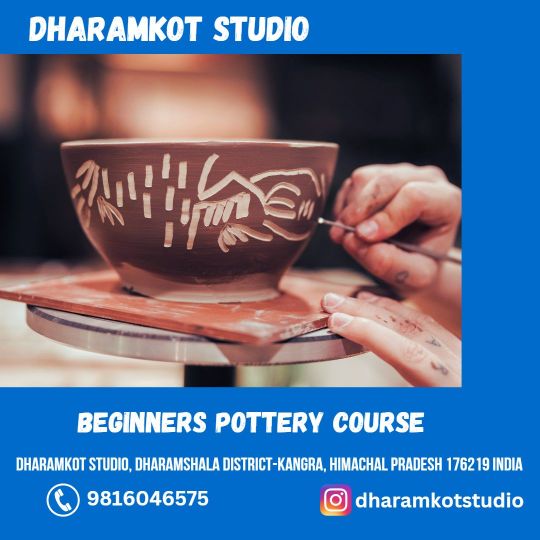
0 notes
Text
Zoey Thakur Wiki, Biography, Age, Height, Weight, Family, Net Worth
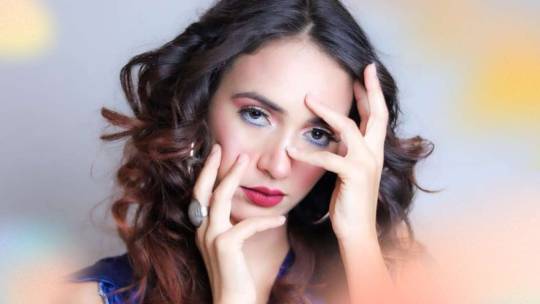
Zoey Thakur Wiki: Zoey Thakur is a talented Indian model and actress who has made a mark for herself in the entertainment industry. Her captivating looks and impressive acting skills have gained fame and popularity across various platforms. Having won and been the runner-up in several beauty pageants such as Miss North India Glam Hunt (Runner Up 2021), Miss Himalaya (2021), Miss Bharat (1st Runner Up 2021), and Miss India Continent (2022), Zoey's career took off to a flying start.
Her success in the Miss North India Glam Hunt competition even led to her receiving a grand welcome in her hometown of Mandi, which was covered by several regional newspapers. However, her appearances in Prime Play's bold web series, Stranger and Babuji, alongside Bharti Jha and Tarakesh Chauhan, truly propelled her to fame. She has also acted in the Ullu web series, MX Player series, and Prime Shots movie, showcasing her versatility as an actress.
Zoey Thakur Wiki
Zoey Thakur Body Measurements
Zoey Thakur Family
Zoey Thakur Web Series List
Zoey Thakur was born and raised in Kotli, a place in Mandi, Himachal Pradesh, and is 25 years old. She completed her schooling from Govt. Polytechnic School, Kangra, and subsequently pursued B.Tech from IEI Kolkata (AMIE). With a passion for modelling from a young age, she received support from her family and pursued acting after attending the Film and Television Institute of India (FTII) Pune.
Zoey resides with her family, including her father, Hem Singh, a retired havaldar currently serving in the Indian army; her mother, Premlata Thakur, a homemaker; and her younger brother Ajay Thakur, who is also serving in the Indian military.
Despite her popularity, Zoey has kept her personal life private, without information about her past relationships or boyfriends. As of 2023, she remains single and unmarried. It is worth mentioning that Zoey comes from a family with a history of service to the nation, as her grandfather was an Indian soldier who fought bravely during the 1965 and 1975 wars.
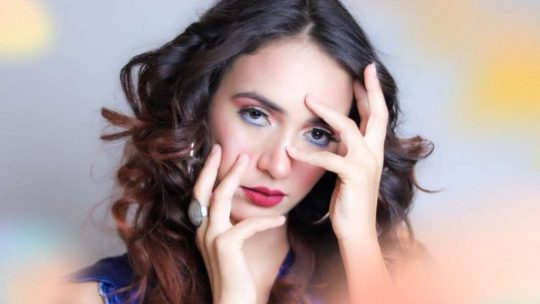
Zoey Thakur Wiki
Zoey Thakur Wiki
Real NameZoey ThakurNick NameZoeyProfessionActressDate of Birth27 September 1998Age24 YearsPlace of BirthKotli, Mandi, Himachal PradeshNationalityIndianHair ColorBlackEye ColorBlackSexual OrientationStraightZodiac SignScorpioReligionHinduismHometownMandi, Himachal PradeshCurrent LocationChandigarh, PunjabLanguages KnownHindi, English, Urdu, Pahadi, Himachali, PunjabiSchoolGovt. Polytechnic, KangraCollegeIEI Kolkata (AMIE)Educational QualificationB.Tech in ECETheatreChandigarh Art Theatre, Gaiety TheatreHobbies and Favorites StuffTrekking, Travelling, Running, Acting, Dancing, Singing, Camping
Zoey Thakur Body Measurements
Height5'4″ ftWeight55 KgsBreast Size32 inchesWaist Size28 inchesHips Size32 inches
Zoey Thakur Family
Grand FatherSoldierFatherHem Singh (Rt. Hawaldar)MotherPrem LataYounger Brother (Sibling)Ajay (Soldier)
Zoey Thakur Web Series List
Below is the entire list of her web series.
- Stranger on Prime Play app
- Babuji on Prime Play app
Read the full article
0 notes
Text
Rajasthani Painting - A Glorious Medieval Indian Art Tradition
Rajasthani artworks were well supported in middle age India, with the consolation and monetary assistance from the rulers of a few free provinces of Rajasthan. They were additionally named as Rajputana canvases, as the place where there is Rajasthan was prominently known as Rajputana too in middle age India, between sixteenth to nineteenth 100 years.
It was one of the most famous types of middle age Indian craftsmanship, lined up with the Mughal type of expressions which got the greatest support during that particular period. Be that as it may, it contrasts from Mughal artworks in its selection of subjects, utilization of varieties and the portrayal of the human figures in those works of art. rajasthani painting creations were drawn for the most part on strict points, similar to accounts of Radha Krishna or sections from Ramayana and Mahabharata. The human figures all were demonstrated to be wearing Hindu attires,more unobtrusive and devout in nature than the subjects of Mughal artworks which were substantially more strongly drawn and had no strict touch in them. The scene artistic creations of Rajasthani structure showed the unpleasant and sandy highlights of the desert place that is known for Rajasthan, while Mughal compositions stressed on the foundation of vivid nurseries and charming scene as preferred by the Mughal rulers.
Like many other contemporary Indian works of art, Rajputana workmanship additionally utilized a few normal tones, got from plant body parts, rough minerals, even powdered valuable stones and fine particles of gold and silver. These extraordinary specialists never utilized any substance tones to make their artistic creations. They made fine brushes from plant twigs and hairs from tails of squirrels to arrange their photos. The photos were drawn on papers or material, however brilliant works of art had been made on the walls and roofs of numerous popular Rajput castles and posts worked during that time, similar to City Royal residence in Udaipur. Yet, the most noteworthy type of Rajasthani painting was small works of art; made for the most part on silk, wood and paper; however a few scaled down canvases were likewise made on ivory and marbles.
Many schools of artworks prospered during that period, contingent upon their particular qualities and the specific locales where they were created. A portion of these well known schools of Rajasthani works of art are Mewar School of painting, Marwar School of painting, Bundi compositions and Kishangarh canvases. Indeed, even Kangra and Kulu schools of compositions were remembered for the Rajasthani type of expressions, because of their unmistakable nature of artworks.
These canvases not just portray the strict convictions of the Rajasthani nation of that period, however they likewise give a legitimate knowledge into the public activity of individuals living during the middle age. Consequently they assist everybody with getting a reasonable image of the royals along with the general mass of Rajasthan, living at that period.
Rajasthani painting is worshipped as an old and exceptionally moderate type of painting till today among the work of art admirers of the world.
For more details, visit us :
Madhubani krishna painting
Cow pichwai painting in india
Indian tribal art painting
Pattachitra Art Painting
0 notes
Text

Anonymous - Utka Nayika: a lady awaits her lover in the forest (ca. 1775-1780)
149 notes
·
View notes
Photo

Girls Bathing, Pahari Style, Kangra School, Himachel Pradesh (gouache on paper), 18th century.
113 notes
·
View notes
Photo
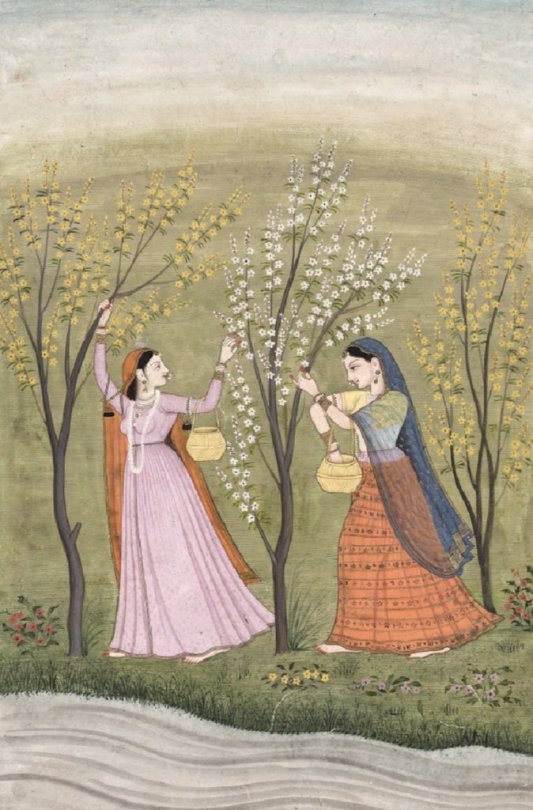
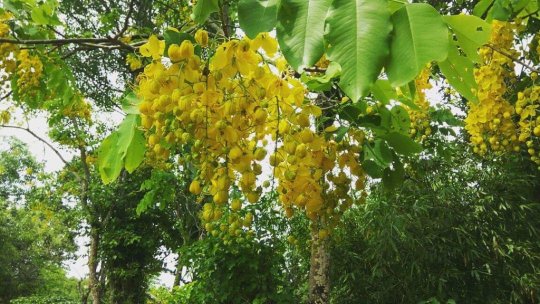

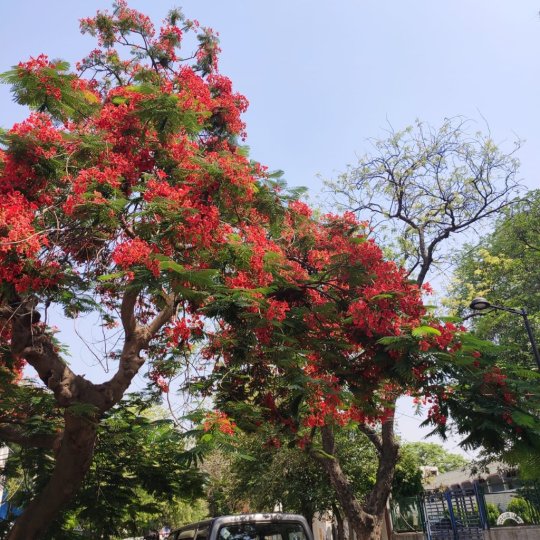
Ragini Vasanti of Raga Hindola circa 1785-90, Kangra School of Art. National Museum wrote : With so much happening around us, we might ‘ve missed noticing the gold of Amaltas & the crimson of Gulmohur. This miniature painting represents the essence of our current mood, while we witness the brilliant burst of Amaltas & Gulmohur around us. Share a picture from our Amaltas diary. (via Twitter: National Museum New Delhi)
45 notes
·
View notes
Photo

Virhini Nayika, Love-Torn Heroine , c. 1800 India, Pahari Hills, Kangra school, late 18th-early 19th Century | Cleveland Museum of Art
27 notes
·
View notes
Text
Welcome to Palampur's most enchanting school campus, where dreams take flight amidst lush greenery, serene landscapes, and state-of-the-art facilities. Immerse yourself in a haven of knowledge and beauty, as you embark on an unforgettable educational journey. call St. Paul's school for more details 01894-235445
#best school in himachal pradesh#oldest school in himachal pradesh#best school in kangra himachal pradesh#boarding school in kangra#best school in palampur#famous icse school palampur#school in kangra#top school in palampur#best school campus in palampur#top school in himachal pradesh
0 notes
Text
Kangra Valley Tour
Kangra Valley Tour
Distance: 18 km south of Dharamsala, 86 km from Pathankot, 248km from Shimla
The Historic Perspective of Kangra Valley
Kangra – a name that spells a wealthy history. A funds city which the Katoch dynasty guarded for ages. A Pandora’s box which attracted numerous plunderers. An alcove was blooming the famous Kangra school of art. That’s Kangra. and much far more. Kangra Tour…
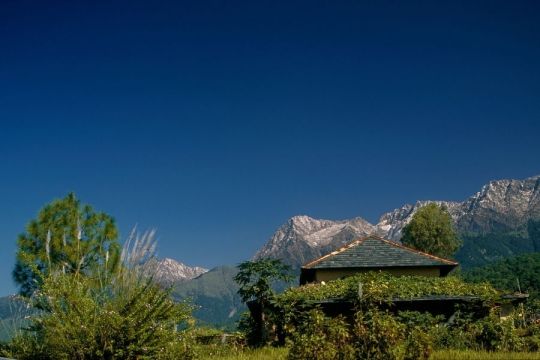
View On WordPress
1 note
·
View note
Text
An Art Exhibition Like None Other [A Photo Story] – India Fellow
What comes to your mind when you think of an Art Exhibition? A gallery walk in a metropolitan city? An event hosted by a famous artist? A festivals in a well-known exhibition centre like NSIC or Kaala Ghoda? Some of you may even recall visits to museums that display art and hold regular events to showcase indigenous and foreign work.
Whenever I think about art and leisure, the imagination takes me to urban spaces; to diverse modern centres, often with limited or even restricted access. It might have a section to display rural art forms, maybe even artists from the hinterlands presenting their talent but the space remains essentially urban, or even urban elite.
In complete contrast to this, I got a chance to attend one of the best art exhibitions I have ever been to, in a village in Kangra, Himachal Pradesh. In my , I had written about how leisure and entertainment here means activities like long walks, chatting, soaking in nature, cooking, and dancing in a slow and relaxed manner. Amidst this, an art exhibition may sound like a misfit but it was one if the most wholesome experiences, not just for me but also for everyone around here, including the locals.
The exhibition was showcased at a local art gallery called , that means home. Anirudh Choudhry aka , the founder of Baadii Art Gallery is an artist whose medium of expression flows freely between painting, cinema, archives, photography and now curation. He has been working with art in rural places for quite some time now. He calls them places of high synergy and harmony as compared to the hostile environment of cities with constant struggle.
Lallan came to Kandbari, a village in Kangra, to live in peace and explore his art. What was shown to him as a potential home, soon became an Exhibition Center, hence came the name Baadii. It started with a small showcase of a which received much love and appreciation from the people around. Next, came work of a naturalist where they combined his passion with an installation and conveyed the message of nature conservation.
Eitthu the title of the exhibition means ‘here’ or ‘यहाँ’ in Pahadi. This collection of work here depicted Kangra culture, through the material sourced locally. It was so beautifully contextualised that the residents who saw the artwork really saw themselves or a version of them and how they have changed – this was also the theme of this exhibition.
The idea was to make art accessible to all, while at the same time, contextualising and presenting the original artwork by dedicated artists in the nearby villages.
People make art somewhere and present it all over the world except the place where it actually took shape, which is disappointing. Eitthu depicts life in Kangra here itself!
He believes that when a person with skills comes to the place with high action, both the person and place get benefitted. The artists from Sir JJ School of Art, Mumbai – Roshan Anvekar, Rohan Anvekar, Pratik Raut and Kumar Misal, did just that. They worked on exploration and research for two months followed by a month of residency during which they created their masterpieces. The criteria for selection was that the work should establish a solid meaning with geography and demography of Kangra.
Roshan’s work on slate with a bamboo frame
work showcased application merged with material such as charcoal, slate, bamboo, mud, straw and more. He tried to show the anthropological side of culture that is fading away such as clothing – motifs and garments, the way people look, how they talk, their lives and aspects that distinguished them as people of Kangra. His work acted like a mirror or rather, a time machine to locals who saw themselves back in time.
Roshan’s work with bamboo and straw
Pratik has keen interest in migration and livelihoods. He uses goat and sheep to depict change. In his work here, he has used , an art form famous among the elite but local people know less about it. He has combined it with his own unique style to depict the lifestyle of people, especially Gaddi tribe that has been a part of Kangra for long. He showed the shift from their earlier nomadic ways of life to more settled, modern and materialistic living. That combined with the changing landscape of the place tells a story of transition in a nuanced way.
Pratik’s version of Kangra Miniature Art – A part of his long scroll
Rohan is a landscape artist. His work focused on the architecture of Kangra and its transformation over the years. He presented a story of those colourful yet lonely mud stone and wooden houses in the higher reaches that have been abandoned by the owners to move downwards into modern brick and cement structures. His exquisite installation depicts destruction and change.
Rohan’s installation
Kumar is a print maker. He creates his own surface to work on. Here, he collected local material to make his art. Everything was sourced from waste and other raw material from the fields. He processed them to make fibre and then paper. He has used the surfaces to depict his observations about Kangra and its appearances. Kumar’s process of creating art became the art itself.
Kumar’s creations
The exhibition had a tremendous response from the audience. Everyone from youngsters to men, women, older people and kids came to visit it and could connect with it at many different levels. They were thrilled to see their lives, surroundings and culture being shown with local material. It became personal for them. Many were heard saying “Arey, ye to hum hi hain!” (“Oh, this is us!”). What made it even more beautiful was that they could interact with the artists themselves and hear from them about what they did, how and why.
Team Eitthu
This exhibition gave people a chance to have conversations that are otherwise missing. It wasn’t just a way of leisure and entertainment but much more. Such public spaces must be everywhere. They can become a way to address local issues locally.
Anything that initiates a dialogue can become a catalyst in something extremely important and often difficult to begin with. People start talking about matters which generally don’t get talked about. It might not result in action immediately but at least it starts the journey towards it.
How this space has opened up a new platform for conversations and meaningful dialogue truly gives a chance to Baadii. In a world where people in villages are cutoff from mainstream arts, Baadii has opened up new avenues.
32.10844576.5745264
This content was originally published here.
0 notes
Text
Rajasthani Painting - A Glorius Custom of Indian Expressions in Medival Period
Rajasthani works of art were well supported in archaic India, with the consolation and monetary assistance from the rulers of a few free provinces of Rajasthan. They were additionally named as Rajputana compositions, as the place where there is Rajasthan was famously known as Rajputana too in middle age India, between sixteenth to nineteenth hundred years.
It was one of the most famous types of middle age Indian workmanship, lined up with the Mughal type of expressions which got the greatest support during that particular period. However, it varies from Mughal canvases in its selection of subjects, utilization of varieties and the portrayal of the human figures in those artworks. Rajasthani compositions were drawn for the most part on strict points, similar to accounts of Radha Krishna or sections from Ramayana and Mahabharata. The human figures all were demonstrated to be wearing Hindu attires,more unobtrusive and devout in nature than the subjects of Mughal artistic creations which were substantially more strikingly drawn and had no strict touch in them. The scene artistic creations of rajasthani painting showed the unpleasant and sandy highlights of the desert place that is known for Rajasthan, while Mughal compositions stressed on the foundation of vivid nurseries and charming scene as enjoyed by the Mughal rulers.
Like many other contemporary Indian works of art, Rajputana workmanship additionally utilized a few normal tones, got from plant body parts, rough minerals, even powdered valuable stones and fine particles of gold and silver. These extraordinary craftsmen never utilized any synthetic tones to make their artworks. They made fine brushes from plant twigs and hairs from tails of squirrels to arrange their photos. The photos were drawn on papers or material, yet brilliant canvases had been made on the walls and roofs of numerous renowned Rajput castles and fortresses worked during that time, similar to City Royal residence in Udaipur. In any case, the most noteworthy type of Rajasthani painting was small scale canvases; made for the most part on silk, wood and paper; yet a few little compositions were likewise made on ivory and marbles.
Many schools of compositions thrived during that period, contingent upon their particular qualities and the specific areas where they were created. A portion of these famous schools of Rajasthani works of art are Mewar School of painting, Marwar School of painting, Bundi compositions and Kishangarh canvases. Indeed, even Kangra and Kulu schools of artistic creations were remembered for the Rajasthani type of expressions, because of their particular nature of canvases.
These compositions not just depict the strict convictions of the Rajasthani nation of that period, however they likewise give a legitimate understanding into the public activity of individuals living during the middle age. Subsequently they assist everybody with getting a reasonable image of the royals along with the general mass of Rajasthan, living at that time.
For more details, visit us :
terracotta mural
Mural Clay
wood carving
Phad painting
0 notes